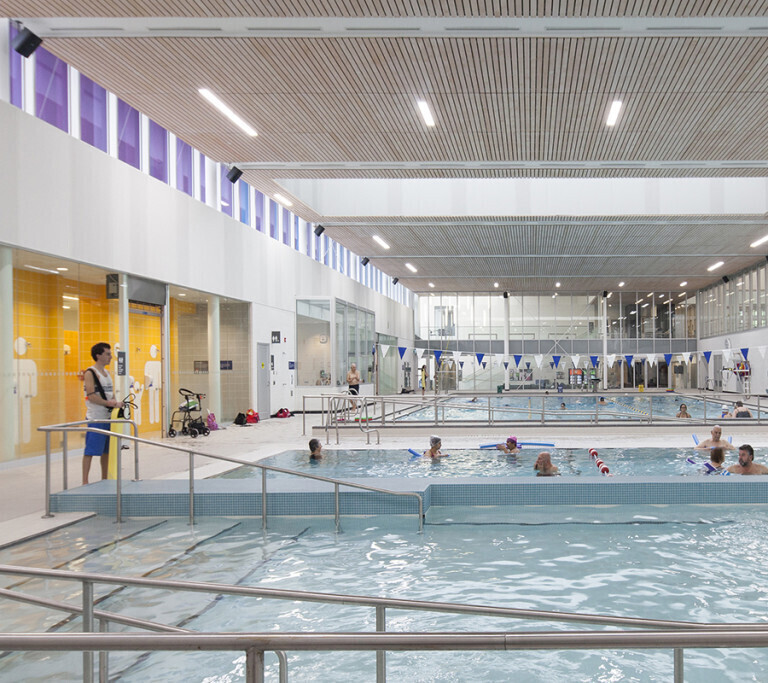
Building in the Urban Environment: The Challenge of Design
As urban populations rise, it makes sense to build upward, not outward. But building within an urban environment brings with it design and construction challenges that set these projects apart. Many cities have height restrictions and/or style requirements that designers are obliged to meet, while high-density housing or offices need to be well-designed to keep the people who use them happy and healthy. From the safety of passers-by to the enjoyment of users, achieving success in urban building comes down to foresight and planning.
Planning
Lack of space in itself is not necessarily a problem when building in an urban area; however, planning is required on the part of the designer and that of the contractor to ensure it doesn’t become an issue.
For builders, adaptability is key. A small site calls for intelligent use of space, whether that means lane closures, setting up temporary cranes, or only bringing in the materials that are going to be used on site each day. For designers, constructability is the largest issue; even the best designers need a comprehensive understanding of what it takes to erect their building in the space available. To that end, an increasing number of clients have been using Aquicon’s pre-construction services to better plan and coordinate their urban projects.
In the case of one community centre that we constructed in downtown Toronto, we completed a full site audit down to the inch, and had a complete site layout drawn up to ensure that every square inch of the site was laid out and managed. Doing this, and involving each trade, allowed for proper flow and movement throughout the duration of construction with minimal impacts to site setup, laydown areas, etc.
Public Safety
The number one concern when working in a busy area is public safety. For Aquicon, challenging sites from a safety point of view typically include live or active campuses and heavily built-up environments like downtown Toronto. With no option to shut down the surrounding area, construction activities in these cases must proceed in the midst of a lot of human activity. All steps must be taken to ensure that members of the public are adequately protected, including maintaining traffic flow and overhead protection.
It takes a team of eyes to approach these urban building scenarios and ensure each and every step is taken. Prior to commencing on this type of site our Health and Safety Manager, Operations Manager, Project Manager, Site Super, and I will review all areas of concern. A site audit will be completed and project hazard analysis done to ensure that we outline all possible public and worker hazards. We then ensure that each and every hazard and risk is removed, whether by adding additional manpower for traffic flow, using equipment for coverage to public areas, or implementing shut downs to keep the public out of harm’s way during certain operations.


“From the safety of passers by to the enjoyment of users, achieving success in urban building comes down to foresight and planning.”
Daniel Aquino, President, Aquicon Construction
Designing for Liveability
Making your new building as liveable as possible makes tenants happier and has significant financial benefits for the owner. Environmentally friendly design is just one factor that can have a huge impact on the desirability of a new build. Healthy workplaces, including those that are LEED certified, can boost staff morale and retention, resulting in significant cost savings, less absenteeism and a better internal culture for tenant companies. A building that is more attractive to tenants and their employees attracts higher rents, a significant consideration given the high costs of urban land.
We have found that Ontarian designers in general do an excellent job at designing for liveability. One design insight we would offer that is universally applicable is that a better understanding of the client leads to better outcome. Spend time with the actual users; get a feel for how they function and what they need from the building before putting the concept to paper.
Community Relations
Long-time residents of urban neighbourhoods aren’t always welcoming to “gentrifiers”. Any time a construction company enters an existing neighbourhood, there is going to be a certain degree of hesitation or annoyance within the community. The key to reducing opposition and making the project seem like a win for that community is making the new facility fit in. Ensure your design has a feel similar to that of its surroundings rather than dramatically standing out; we have found this is a much more positive approach and leads to greater acceptance of change.
From the safety of passers-by to the enjoyment of users, achieving success in urban building comes down to foresight and planning. For builders, adaptability is key. For designers, constructability is the largest issue; even the best designers need a comprehensive understanding of what it takes to erect their building in the space available. In every case, it’s planning that sets successful builds apart from problematic ones.
Recent News
View More NewsSustainable Construction: Where The Industry Is Going
In the last two decades, we’ve been spearheading a greater focus on sustainable approaches to construction and use of green t...
Why Strategic Thinking Matters
“Strategic” is a word that gets bounced around a lot and is often linked with either “planning” or “thinking”, but ...
Success in Innovation Depends on Effective Leadership and Management
Innovation can be a liability, if the process is not understood or properly managed. For the work on site, construction materia...